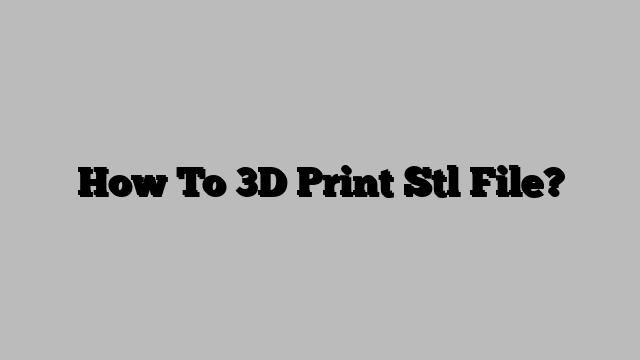STL files are one of the most common file types used for 3D printing. They contain information about the geometry of an object and can be used to create a physical model using a 3D printer. In this article, we’ll explore how to 3D print an STL file, including the software needed and the steps involved in the printing process.
Choosing a 3D Printing Software
The first step in 3D printing an STL file is to choose a 3D printing software that is compatible with your printer. Some popular options include Ultimaker Cura, Simplify3D, and PrusaSlicer. These software programs allow you to load your STL file, adjust settings such as print speed and layer height, and generate a G-code file that the 3D printer can read.
Preparing the Printer
Once you have your G-code file, you need to prepare your 3D printer for printing. This typically involves leveling the print bed, ensuring that the filament is loaded correctly, and making sure that the printer is calibrated properly. You should also verify that your printer is set to the correct temperature for the type of filament you are using.
Loading the STL File
Next, load the G-code file into your 3D printer’s software. This will allow you to preview the print and adjust any settings before printing. Some 3D printing software also allows you to preview the print in 3D and make any necessary adjustments to the model.
Printing the Model
Once you are satisfied with the settings and preview, you can begin the printing process. The 3D printer will follow the instructions in the G-code file to print the model layer by layer. It’s important to monitor the print and make any necessary adjustments, such as adjusting the print speed or temperature, to ensure the model is printed correctly.
Finishing the Print
Once the model is printed, it may require some finishing touches to remove any support structures or imperfections. Some prints may require sanding, painting, or post-processing to achieve the desired finish. It’s important to follow any instructions provided with the filament or printer to ensure the final product meets your expectations.
3D printing an STL file requires the right software, printer, and settings. With the right tools and knowledge, you can create high-quality, accurate prints of your designs. It’s important to carefully prepare your printer and monitor the printing process to ensure the best possible outcome.
